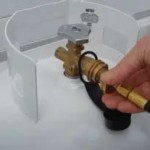Antique Fireplace Bellows: A History of Function and Art
Antique fireplace bellows represent more than just simple tools; they embody a fascinating intersection of functionality, craftsmanship, and social history. These seemingly humble objects, designed to stoke the flames of a hearth, offer insights into past design aesthetics, manufacturing techniques, and the domestic lives of previous generations. The value of an antique bellows lies not only in its age but also in its construction, materials, ornamentation, and provenience.
The primary purpose of fireplace bellows is straightforward: to direct a focused stream of air into a fire, accelerating combustion and reviving dwindling flames. Before the widespread adoption of central heating, the fireplace served as the primary source of warmth and cooking in homes. Bellows were therefore essential tools, allowing for efficient fire management and minimizing the effort required to maintain a comfortable and functional hearth. Their presence speaks to a time when manual labor was central to daily living, and even seemingly minor conveniences were highly valued.
The evolution of bellows design reflects changing technological capabilities and aesthetic preferences. Early examples were often simple and utilitarian, constructed from readily available materials such as wood, leather, and iron. As craftsmanship improved, bellows became more elaborate, incorporating decorative carvings, inlaid materials, and intricate metalwork. The level of embellishment often correlated with the social status of the owner, with wealthier households possessing bellows that were as much works of art as practical tools.
The Anatomy of an Antique Bellows
A typical antique fireplace bellows consists of several key components. The *body* is usually composed of two flat wooden boards, often referred to as leaves. These boards are joined by flexible *sides* made of leather, canvas, or a similar pliable material, creating an airtight chamber. A *nozzle*, typically made of metal or wood, directs the air stream towards the fire. A *handle*, located on one or both leaves, allows the user to operate the bellows. Finally, a one-way *valve*, usually located near the handle, allows air to enter the chamber while preventing it from escaping back through the intake.
The materials used in the construction of bellows varied depending on regional availability and the intended price point. Hardwoods such as oak, walnut, and cherry were common for the leaves, providing durability and stability. Leather, often tanned sheepskin or goatskin, was a popular choice for the sides due to its flexibility and resistance to tearing. Metal components, such as the nozzle and hardware, were typically made of iron, brass, or copper. The quality of these materials and the skill with which they were assembled significantly impact the value and longevity of an antique bellows.
Identifying the type of wood used can give clues about the origin and age of the bellows. For example, the use of mahogany might suggest a bellows made for export in the colonial period or later. Examining the leather stitching, the types of nails or tacks used to secure the leather, and the overall construction techniques provides valuable insights. Careful examination of these details is crucial for authenticating antique bellows and understanding their history.
Decorative Elements and Regional Variations
Beyond their functional design, antique fireplace bellows often incorporate decorative elements that reflect the artistic trends of their time. Carvings, painted designs, and inlaid materials were common embellishments, transforming the bellows into aesthetically pleasing objects that complemented the décor of the hearth. These decorative features can reveal information about the owner's social status, regional affiliations, and personal tastes.
The specific style and ornamentation of bellows varied considerably across different regions. In some areas, bellows were adorned with folk art motifs, such as floral patterns, animal figures, or geometric designs. In others, they featured more formal and sophisticated decorations, such as neoclassical or Victorian-era motifs. The regional variations in bellows design provide a fascinating glimpse into the diverse artistic traditions that existed throughout history.
The handles of the bellows also offered opportunities for decorative enhancement. They could be carved into elaborate shapes, inlaid with bone or ivory, or adorned with metal ornaments. The shape and design of the handle often reflected the ergonomic considerations of the time, with some handles designed for ease of grip and comfortable operation. Sometimes the bellows were emblazoned with crests or initials, indicating ownership and further enhancing their decorative value. These personalized touches make each antique bellows a unique piece of history.
Collecting and Preserving Antique Bellows
Collecting antique fireplace bellows can be a rewarding pursuit, offering the opportunity to own a tangible piece of history. However, prospective collectors should be aware of the factors that influence value and the steps required to preserve these delicate objects.
The value of an antique bellows depends on several factors, including its age, condition, rarity, provenance, and decorative qualities. Bellows in excellent original condition, with intact leather and undamaged woodwork, command higher prices. Bellows with elaborate decorations and unique designs are also more valuable. Provenance, or the documented history of ownership, can significantly enhance the value of an antique bellows, particularly if it can be traced to a notable individual or family.
Preserving antique bellows requires careful attention to their delicate materials. Leather can dry out and crack over time, so it should be treated with a specialized leather conditioner. Wood should be protected from excessive humidity and temperature fluctuations. Metal components should be cleaned and polished to prevent corrosion. Avoid exposing bellows to direct sunlight or harsh chemicals, as these can cause irreversible damage. These guidelines apply to both display and storage to maintain the value and condition of collected pieces.

Buy Fireplace Bellow Dutch Antique In

Buy Antique Wood And Leather Bellows Ornamental Fireplace In

Buy French Fireplace Bellows Wooden And Brass In

Vintage Fireplace Bellows Adams

Buy Primitive Antique Brass Bellow Wooden Fire Blower In

New England Fireplace Bellows Ca 1835 Antiques Roadshow Pbs

Buy Fireplace Bellows Wood With Red Leather Vintage In

Buy Antique Dutch Fireplace Bellows Copper Hammeredmedieval In

A Very Rare Pair Of Federal Carved Fire Bellows Attributed To Samuel Mcintire M Circa 1800 Featuring Fireplace Vintage Antique Items

Fireplace Bellows Vintage








